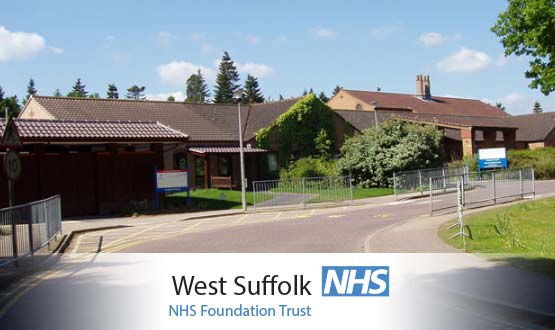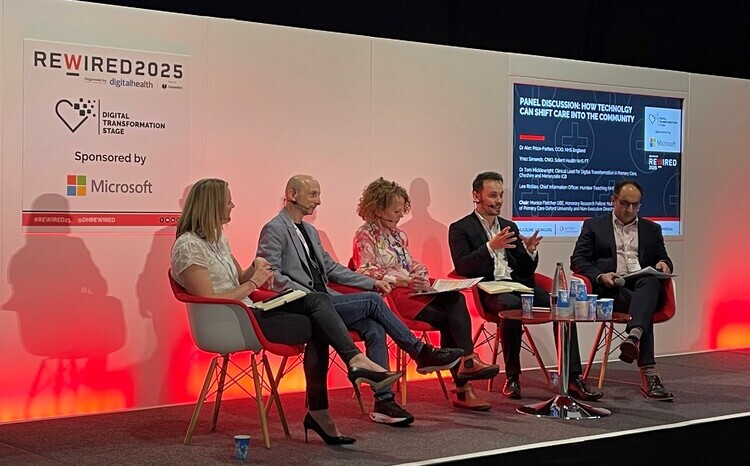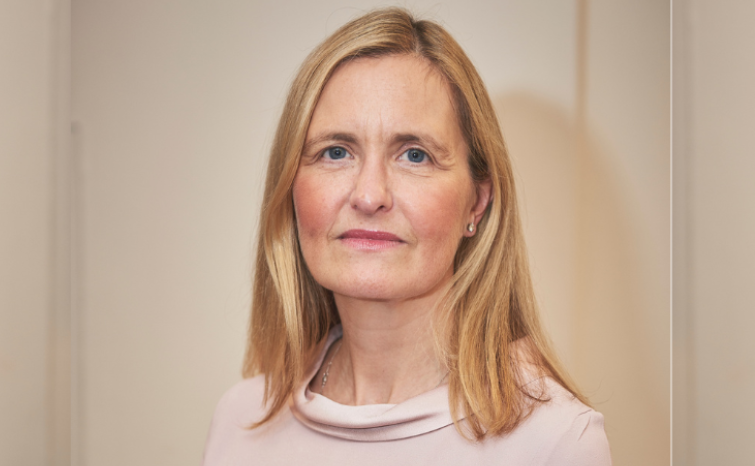And breathe: West Suffolk the other side of its Cerner go-live
- 25 May 2016

Three weeks after West Suffolk NHS Foundation Trust went live with its Cerner electronic patient record, Dermot O’Riordan admits that the organisation is “still holding its breath.”
“It has gone at least as well as expected; but I do not want to crow, because there are still things that could go wrong,” he says. “But it has definitely gone live at last.”
Working over the bank holiday
West Suffolk runs what its website describes as a “vibrant, friendly and accessible” hospital on the outskirts of Bury St Edmunds, serving around 275,000 people spread across 600 square miles.
It started looking at its IT about three years ago, as its near-20 year old patient administration system came to the end of its life. In 2013, it published an OJEU tender for a single, integrated electronic patient record system, and the following summer it announced that it had signed a ten-year contract with Cerner for its Millennium EPR.
Go-live was initially slated for last October, but this was put back to this year’s May Day bank holiday; in part because the trust decided to move to e-prescribing at the same time. O’Riordan says that in the end the trust experienced “not quite a full big bang”.
“We went live with the patient administration system, FirstNet (in A&E), nursing observations, clinical documentation (in most departments), electronic prescribing and medicines administration (except in oncology), radiology, endoscopy and so on… so it was pretty big.”
He says that adding e-prescribing “made sense from a clinical workflow point of view”, because otherwise staff admitting patients and planning discharge would find themselves moving between electronic systems and paper forms.
But, he says, the trust also “wanted to get the disruption of the go-live out of the way in one go.” “Staff wanted to get on and do it,” he says. “In the four days after go-live, we dispensed 15,000 medications electronically and we are now doing 5,000 per day. We are doing that, when before we were using paper charts.”
White knuckle and proud moments
O’Riordan himself is a surgeon by background. He became a consultant at the trust in 2001 and was soon promoted to director of surgery, before becoming assistant medical director and then medical director.
In that time, he sat on the council of the Royal College of Surgeons, and worked with Sir Bruce Keogh on publishing performance data for surgeons on NHS Choices.
As the trust started to consider the future of its IT, he stepped down from his medical director post to become chief clinical information officer; and then did a stint as interim chief executive.
When Digital Health interviewed him back in 2014, he was convinced that a shift from ‘best of breed’ to ‘single supplier’ was the right way to go, but predicted there would be some “white knuckle moments” in the move.
In the event, he says, these arose in some bits of the data migration. “You wonder if things are going to go across; but they did and it worked.” Introducing SNOMED clinical terms and e-prescribing were also big decisions.
Over the bank holiday, watching the system go-live across more and more of the trust had its moments. “We had a board up and you could see on it what wards were done and what was live. As it happened, it was a proud moment. Some patients had particular issues, of course, but everybody worked together on them. That includes Cerner, who were very good,” he says.
Success factors
Overall, he argues, the success of the project – to date, allowing that there is still a long way to go – has been down to “support within the organisation from top to bottom.”
“We really did do that thing of making this a clinical change project, not an IT project,” he expands. “We had buy-in from our executive team: we had the finance director on night shift on the help desk, and everybody was out there and visible.
“We did a lot of planning. We got the build right. A lot of effort was put into getting people trained. The ward [walkers] were very good [over the go-live]; they went out and found problems and fixed them. The staff were fantastic.”
O’Riordan says benefits are already being delivered. For instance: “You can see people doing e-prescribing and that is a big change. You can see things being prescribed, whereas before we only knew what had been bought.
“Handovers are changing already, because suddenly junior doctors can look up the chart and see the medications, and discuss them at the handover. The way that people are taking this up is phenomenal.”
Next steps
Even so go-live is not an end in itself. “It is a hurdle to get over,” O’Riordan says. “Go-live is a hugely important hurdle to get over, but now we need to tweak and to take-up suggestions that people have. The next bit is the fun bit: optimising the system.”
The trust is also looking out beyond its own boundaries and the EPR to integrating with other systems and providing a patient portal. It is working to share information with Addenbrookes, which had its own big-bang go-live with another US system, Epic, in 2014.
“Now we are live, we can test [the system for dong that] and it will work: I know it will,” he says. The trust is also looking to share information with GPs; but this is proving more difficult.
Local practices are split 50:50 between Emis and TPP, and the trust has already established a link to two Emis practices using Healthcare Gateway’s Medical Interoperability Gateway. Exchanging information with TPP practices is proving more “frustrating”, O’Riordan says.
He feels TPP is resisting a direct link with Cerner. But TPP denies this, saying it has approached the company “on multiple occasions” for a link to Millennium; but the US company wants it to work with its HIE platform, which trusts must buy in addition to the EPR.
It points out that has managed to establish a link between Barts Health NHS Trust, which uses Millennium, and local GPs, via the HIE and the MIG, and says it hopes NHS England’s push to get companies to open their APIs will help.
O’Riordan certainly wants things to move. “We are not working for one vendor but for one NHS and its patients. We need to share information to enable staff to efficiently care and vendors should not get in the way. If you want to sell to the NHS, then it should be a requirement.”
Addressing the usability challenge
When West Suffolk decided to go for Cerner Millennium, there was still considerable debate about the best way forward for trusts that needed to invest in their IT after the relative failure of the National Programme for IT in the NHS.
Many trusts were still looking at adding to their core patient administration and departmental systems and pursuing a ‘best of breed’ strategy. An increasing number have since opted for the ‘single supplier route.’ O’Riordan remains convinced that West Suffolk made the right decision for its circumstances.
However, he says there is no doubt that the next issue for suppliers to address is usability. ‘Best of breed’ does some things very, very well; and perhaps better than the individual bits of a single system,” he says. “There are some bits of functionality that we have lost; there is no doubt about that.
“We need to look at that and all vendors, if they are wise, need to look at the user experience side of things. I am an Apple user, but I could probably pick up an Android device and make it work. These systems are not like that.
“They are not as straightforward as they should be; and while they may never get to be like Apple, they could get a bit closer.”
Got to be the way forward
He also points out that some central policy is out of line with the kind of investment his trust has made. “SNOMED, for instance. We have made the shift and we are starting to use that to do much better analysis.
“Yet we are still paid using [the older] ICD10 and OPCS [codes]. We have to pay a coder to put our data back into that format. [NHS England and NHS Improvement] need to address that.”
Overall, though, he says the deployment worked because the trust was sure it was moving in the right direction.
“We were careful not to overpromise and to say that everything was going to be wonderful, but we were confident that this was the right thing to do, and we did go out and sell that message; this has to be the way forward for healthcare.”




